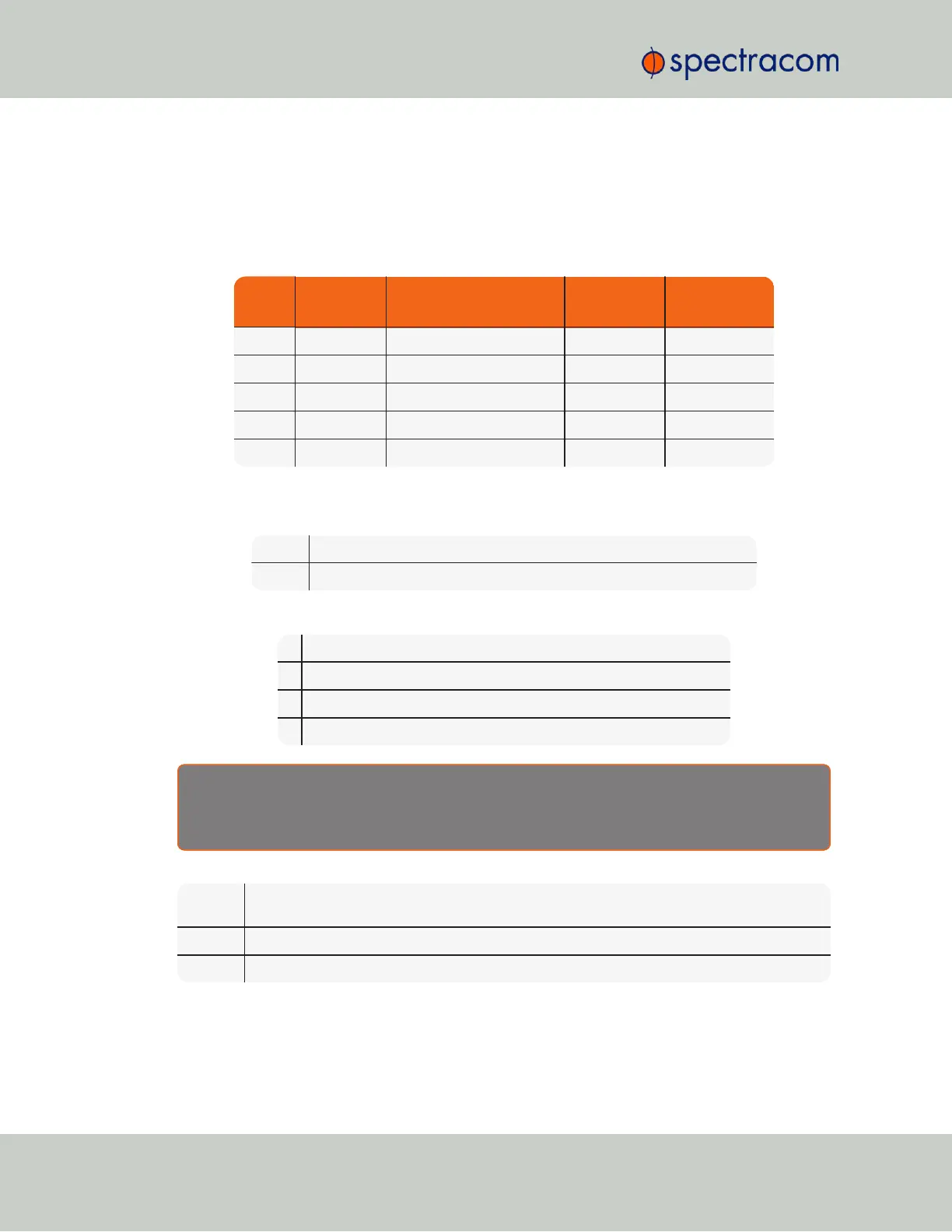The quality indicator (Q) provides an inaccuracy estimate of the output data stream. When the
receiver is unable to track any GNSS satellites, a timer is started. "Quality indicators" below
lists the quality indicators and the corresponding error estimates based upon the GNSS
receiver 1PPS stability, and the time elapsed tracking no satellites. The Tracking Zero Satellites
timer and the quality indicator reset when the receiver reacquires a satellite.
Quality Time (hours) TXCO Error (milliseconds)
OCXO Error
(milliseconds)
Rubidium Error
(microseconds)
Space Lock <1 <0.01 <0.3
A <10 <10 <0.72 <1.8
B <100 <100 <7.2 <18
C <500 <500 <36 <90
D >500 >500 >36 >90
Table 5-27:
Quality indicators
The leap second indicator (L) is defined as:
(Space) When a leap second correction is not scheduled for the end of the month.
L When a leap second correction is scheduled for the end of the month.
The Daylight Saving Time indicator (D) is defined as:
S During periods of Standard time for the selected DST schedule.
I During the 24-hour period preceding the change into DST.
D During periods of Daylight Saving Time for the selected DST schedule.
O During the 24-hour period preceding the change out of DST.
E x a m p l e :
?A15 271 12:45:36.123 S
The example data stream provides the following information:
Sync
Status
The clock has lost GNSS time sync. The inaccuracy code of “A” indicates the expected time
error is <10 milliseconds.
Date Day 271 of year 2015.
Time 12:45:36 UTC time, Standard time is in effect.
526 SecureSync User Reference Guide
APPENDIX

